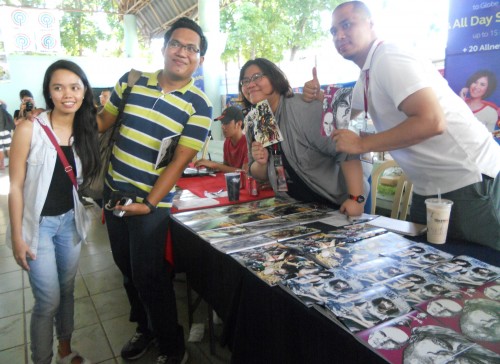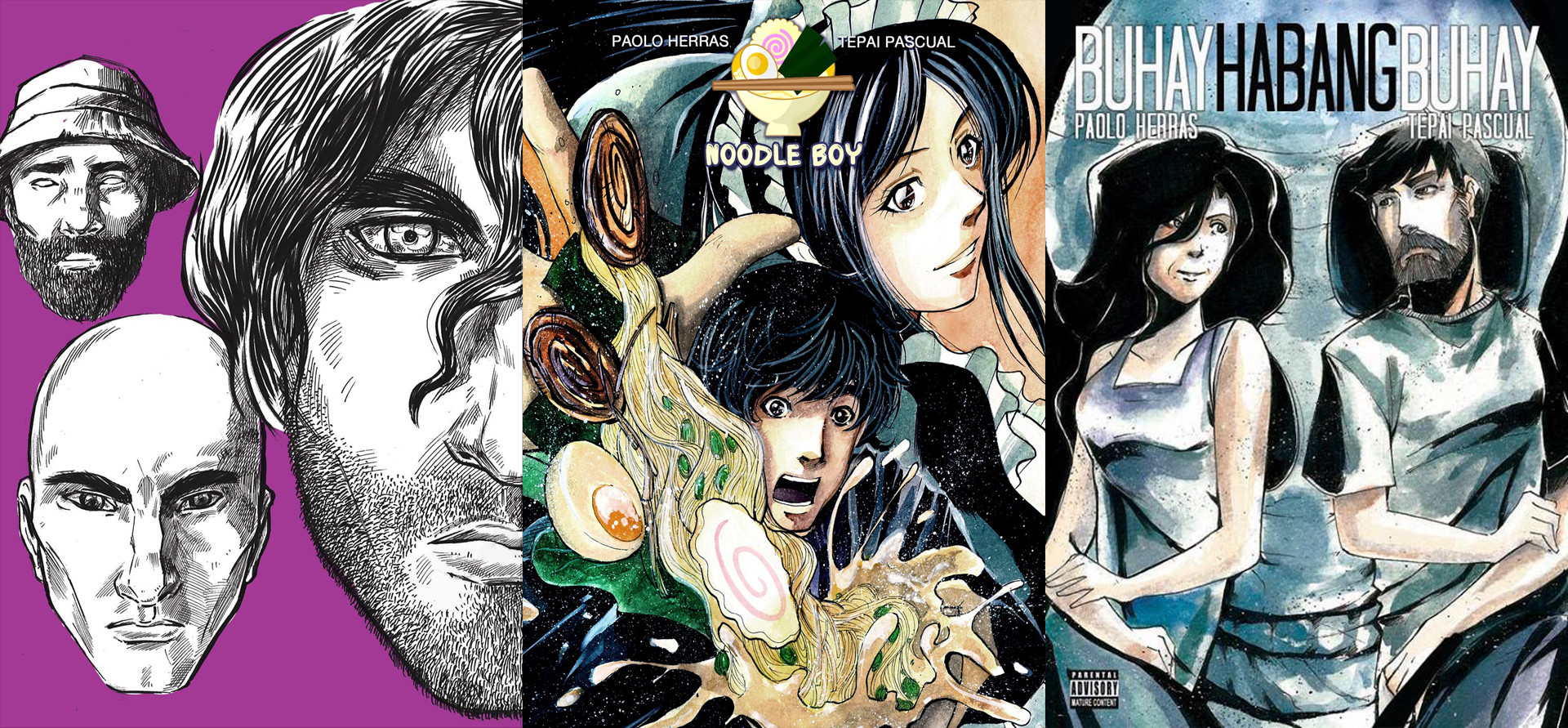Ambush Interviews: TEPAI PASCUAL

Comics may be popular these days, but that’s certainly not the case here; the komiks scene here is still a marginalized industry that is only broken by the occasional “success stories” from Manix Abrera and Stanley Chi and the rest of its new-gen ilk. Thankfully, that kind of marginalization doesn’t apply to most of the creators thriving in the scene. Case in point: Tepai Pascual.
Tepai is a girl whose first love is reading comics. And as you can probably gleam from this intro, her love for the medium never went away, and she indulged in creating her own titles. Now, I’m not feigning competence and say that I know which of her works can be considered as “essential Tepai”, but there is certainly one which grabbed my attention right away: the 300-esque Maktan 1521, which is, according to its Facebook page blurb, “a romanticized story based on the historical battle of Maktan in the year 1521.” Yes, it doesn’t play at being historically accurate but—unlike the horri-bad retelling of the Lapu-Lapu movie which starred the venerable politician Lito Lapid (yes, I’m old enough to remember that celluloid atrocity existing), it’s actually entertaining without it being… well, dumb, I guess.
Anyways, this is an interview recorded back from this year’s Iloilo Comic Con, so this post was really a long time in the making. And if you want some additional context and whatnot, Tepai was also interviewed by this very same site FOUR years ago (conducted by our dear editor Norby Ela, so check it here)! Crazy how time flies, isn’t it? Hope you find the current one worth the wait though, because this is certainly an incisive talk we had with Tepai. Enjoy!
(NOTE: Full interview conducted by Marc Belloni. With additional help from Hope Swann)
FlipGeeks (FG): What is your background which led you to doing this “profession”?
Tepai Pascual (TP): I studied Fine Arts in UP Diliman in Manila. Although I majored in Communication, (I dealt) more with advertising, and more on the commercial side of it. But my passion is really in comics. I love telling stories, so I guess that’s why I went to doing (comics).
FG: So, did you have an opportunity to, back then, study illustration?
TP: No, but I think I have already developed my own style, but I (realize) that I still need to improve, so that’s why I did more comics and more illustrations for people; that’s how I trained myself, (considering) all the critics, comments, recommendations.
FG: Do you only have one “style” that you stick with (when doing comics)?
TP: Whoa! I think I have multiple styles, but I think there is one common thing (which binds them). They have their own identities, but I think they have that common factor which tells the difference (between them).
FG: How do you define that “common factor”?
TP: That’s actually a good question. I think it’s (from) drawing manga, but what I did was I mixed it with a bit of Western style. For example, like (the works) of Frank Miller, Mike Mignola.
I have an officemate (and) he was showing me these cool works (that I didn’t know about). I was actually surprised because i didn’t know that (some people at my old office) were into it. I saw a mixture of both styles in them; actually. I read manga in them, and I also see Western in them. So I think that’s what I did as well, (to be able to) do manga-style and put in Western-style. I put in my own versions of… (pauses and laughs) ta-dah!
FG: When you work on a story, do you have recurrent ideas which you keep coming back to?
TP: As for my solo work, personally, I love history. That’s why for my solo work, I did Maktan 1521, a “romanticized” retelling of the Battle of Mactan, or (the story of) Lapu-lapu. So, based on that, if I were to do another story, then I would do another history story because I know that Buhay Habangbuhay and Noodle Boy are (written) by other writers; I mean, I like them too, (and) it’s not because they asked me to do it. (Otherwise), I won’t do it if I don’t like it. But I do it because the story is interesting. I guess I don’t have that much gift when it comes to story writing, but I do like history, so if ever I’m gonna do another one…
FG: You are speaking to a graduate of history, so personally, I appreciate what you’re doing here (catering to my interests).
TP: (laughs) There are actually very few of us!
FG: Are you tempted sometimes to stop writing, or are you really prefer to stay in illustration?
TP: Ah, that’s a very good question. Actually, I wrote stories way before when I was still in high school, or even in grade school. But for now since I’ve been doing a lot of titles, then I don’t really have that time to make my own. Maybe if I finish all of them, maybe that’s the time I can start. I’d have to do research, a lot of research (laughs)! And that’s a hard thing to do.
FG: When you started drawing, did you have nightly work to do, or were you just (doing your) occupation and not caring about (finishing quickly)?
TP: I was like that before, when I was younger, I just…
FG: Because you’re old now right?
TP: (laughs) Well, I’m still in my 20s! When I was in school, I was like that; I would just get paper and draw and doodle, and I wouldn’t stop, but I don’t think I would recommend that. Then there would come a time that you don’t know what to do anymore, and the stories just stop. And …you know you can’t keep drawing comics like what we’re doing now—(the story) will end. There has to be an end. So, now, if you’re tired to write… well, (for me) that’s the first thing I’m going to do. (I’ll be thinking of things like) What’s the goal of the character? What’s the ending of the story? And then other primary stuff to that.
FG: What’s your take on the environment of manga community here in Iloilo? Is it staggering? How do you see it?
TP: Based on (what I’m seeing) here, I think there are a lot of serious people. They attend and they show their work, they browse. Some of them are really happy to know that there were some Filipinos, or some local artists so I think there’s potential. But I don’t see any local creators based here, in Iloilo. So I think that if there were more creators, then there is the potential (for the scene to develop) like what’s happening in Manila now. But we were also a small community. (The Manila-based artists) even started (experimenting) when we saw the potential, and it’s possible to sell your own comics, then (we said), “Let’s do it.” So we did.
We did our own comics, we formed crews. Sometimes we just published our own titles. The biggest thing that happened was, there’s this thing called Komikon in Manila. (The organizers) made this comic convention just like (Iloilo Comic Con). It actually started like this, you know, in an open gym!
And then after that, (we noticed) a lot of people now that are creating their own (comics) in Komikon and there are more people now (attending than ever before). It’s a way to build on that community. I won’t say that it’s an industry of cash!
FG: Do you think the community writing here in Iloilo (is noteworthy)?
TP: I think so! If there are people who are willing to make their own comics (like) here, then they can showcase it! For example in Manila, or in Baguio, or in anywhere! And I think (the local comics) scene can grow.


















